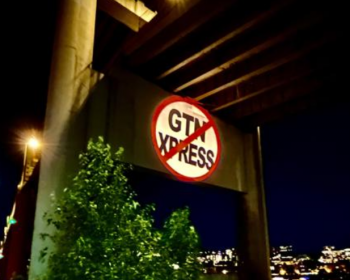BLM Proposes Competitive Leasing Rule for Public Lands
Open gallery

I blogged recently about proposed federal legislation to promote renewable energy development on public lands. One proposed law, H.R. 596, would open federal lands to competitive leasing for renewable energy development. In a hearing on H.R. 596 before the House Subcommittee on Energy & Mineral Resources, the Bureau of Land Management (BLM) testified that it was using its existing statutory authority to create a competitive leasing rule for certain federal lands. Since then, BLM has issued a proposed rule on the topic (complete with a suitably bureaucratic title): “Competitive Processes, Terms, and Conditions for Leasing Public Lands for Solar and Wind Energy Development and Technical Changes and Corrections.” BLM issued the rule on September 30, and interested parties have until December 1 to submit comments to the agency. This blog post offers a brief summary of the rule and describes some areas of potential concern.
The Proposed Rule in Brief
BLM’s proposed rule would significantly change how the agency makes public lands available for renewable energy development. Until now, BLM has made public lands available using its authority to issue “right of way grants” (ROWs) under the Federal Land Policy and Management Act (FLPMA). Under current BLM rules for ROW grants, the agency can use a competitive process only if two parties file competing applications for the same parcel of land. The proposed rule, in contrast, would give BLM discretion to select parcels of public land and offer them for competitive lease bidding, even before any party has expressed interest.
The proposed rule also attempts to promote renewable energy development in “designated leasing areas” (DLAs) that have strong renewable resources and few conflicting uses. The agency proposes to identify these designated leasing areas through its existing land use planning process, using a “landscape scale approach” that considers a broad variety of factors. Essentially, the agency would weigh the economic efficiency of developing renewable energy in areas with strong resources and good access to energy transmission and markets against potential environmental problems such as habitat degradation. The basic analysis would mirror the method the BLM used to select Solar Energy Zones in the desert Southwest. However, the proposed rule does not actually choose any designated leasing areas. Instead, the proposed rule would leave the designation of leasing areas to the land use planning process, which generally occurs every 10 or 15 years and may take as long as 8 years once begun.
The proposed rule would promote development in designated leasing areas in two main ways. First, the designation of these areas in agency land use plans would involve substantial environmental analysis under the National Environmental Policy Act (NEPA). Development within DLAs could refer (or “tier,” in the environmental law jargon) to this NEPA analysis, saving time and money, whereas development outside DLAs would require longer and costlier NEPA analysis. And second, the proposed rule would offer more favorable terms for projects within DLAs.
A brief summary of leasing under the proposed rule should help clarify how lease terms would be better inside DLAs. BLM proposes that renewable energy developers on public lands would face four basic costs. First, they would have to cover the agency’s costs for processing their bids. Second, they would have to pay rent based on the acreage of public lands they develop. Third, they would have to pay a fee based on a facility’s capacity to generate electricity (approved nameplate MW capacity). Finally, they would have to post a bond to cover costs of restoring public lands once facilities cease operating.
Projects proposed inside designated leasing areas would enjoy greater certainty and lower costs. First, the high bidder for a parcel inside a DLA would automatically receive a lease (as long as it can show the ability to pay for its bid), whereas the high bidder for a parcel outside a DLA would merely be the only party who can apply for a ROW, which BLM would have discretion to grant or deny. Additionally, successful bidders for projects inside DLAs could qualify for an “offset,” or reduction in price, of up to 20%. Offsets would depend on certain qualifications, such as having pre-arranged financing or interconnection agreements. Projects outside DLAs would not qualify for any offsets.
Other costs would also be lower and more predictable for projects inside DLAs. For example, the bonding requirement would be fixed for projects inside DLAs, but that same fixed price would be a minimum requirement for projects outside DLAs. BLM could also alter bonding requirements for projects outside DLAs, even during the lease term. Acreage-based rents would increase only every 10 years for projects inside DLAs, but would increase annually for projects outside DLAs. Finally, the capacity-based fee would phase in over 10 years for projects inside DLAs, but over 3 years for projects outside DLAs, meaning the latter projects would face higher costs more quickly. BLM intends all these differences to direct investment in renewable energy on public lands to the most suitable areas.
Potential Problems with the Proposed Rule
Although BLM’s proposed rule reflects progress toward increased availability of public lands for renewable energy development, the rule has two potentially significant problems. First, the way that it proposes to calculate both rents and fees for renewable energy may be inaccurate. And second, the proposed rule’s attempt to promote development within DLAs relies on a land use planning process that is so complex and contentious that just designating the DLAs could take many years.
The way the proposed rule calculates rents for solar and wind facilities is troubling. Rents are the product of county-based land values multiplied by the amount of each parcel a facility uses. BLM assumes that wind turbines encumber only 10% of a parcel, and (more troublingly) that solar farms encumber 100% of a parcel, excluding all other use. The result of this assumption is that wind energy projects would pay 10% of the acreage-based rent that solar energy projects would pay. This result is troubling in part because it seems to favor wind development, but also because the assumption about solar farms may not be correct. Although solar development does use more surface land than wind development, farms in Great Britain show it is quite possible to produce food and solar power on the same parcel. Moreover, some facilities in Texas use sheep to graze down vegetation that would otherwise obscure solar panels. Finally, some solar farms also operate as bee sanctuaries. These possible uses suggest it may not be appropriate for BLM to assume that solar development excludes all other possible land uses. Finally, co-siting of wind and solar facilities on the same parcel of land is a promising way to generate a more consistent renewable energy supply, but BLM’s proposed rule does not seem to permit this possibility.
BLM’s methodology for calculating capacity-based fees is also somewhat troubling. To reach the capacity fee, BLM would multiply the number of hours in a year by a net capacity factor, a wholesale electricity price, and a rate of return (Fee = hours x capacity factor x wholesale electricity price x rate of return). Several aspects of BLM’s proposed calculation are problematic. First, the capacity factor is based on geography and on the efficiency of different technology types. For example, a high-efficiency solar panel in a sunny location has a higher capacity factor than a low-efficiency panel in a cloudy area. BLM itself acknowledges that “efficiency rates may vary by location for each specific project,” but proposes to use a national average instead of regional or site-specific figures. Seemingly, it would be easy to allow a developer to identify a project’s individual capacity factor, since this is a step a developer would likely take anyway in order to calculate project revenues.
Second, BLM’s valuation of wholesale power prices is problematic. To calculate wholesale power prices, BLM proposes to take the average of wholesale prices from 2008 to 2012 for various western electricity markets. BLM would update this figure only every five years. The problem with this valuation is that wholesale electricity prices have been declining very substantially (by more than 50% according to BLM’s own figures), and are likely to continue to decline due to market pressures from low-cost natural gas and renewable energy. Consequently, BLM’s figure for wholesale power prices is inaccurately high, which in turn makes the capacity fee inaccurately high as well.
Third, the fact that BLM’s fee is based on installed megawatt capacity rather than on actual delivery of energy seems quite problematic as well. The basic problem is that renewable energy projects on public lands would owe the same fee no matter how much or how little energy they actually produce or sell, meaning that their payment obligation to BLM would not vary along with their revenue streams. A payment obligation based on delivery of energy and priced in dollars per megawatt hour ($/MWh) would provide greater certainty to developers and would more closely approximate fair market value for industrial use of public lands (because it would be based on the actual use, not an assumed average). I see no particular reason that a fee based on $/MWh would be a logistical problem for the agency; the successful federal Production Tax Credit is valued in this manner and does not seem to challenge the IRS. The BLM should consider changing the capacity fee to more accurately reflect projects’ revenue streams.
A far more serious problem, however, has to do with the strong promotion of development in designated leasing areas. Although it is a good idea to promote development where resources are strong and conflicts are minimal, the designation of leasing areas is likely to take so long that this rule is unlikely to provide benefits in the near term. So far, BLM has identified 17 Solar Energy Zones that it would manage as DLAs under the proposed rule, and seemingly has not identified any leasing areas for wind energy. All solar energy zones are in six Southwestern states. Development in these few areas will receive far more favorable terms, but development throughout the rest of the West will have to wait for updates to BLM land use plans, which could take years. To make this rule more effective, BLM should either accelerate its land use planning schedule or separate the designation of leasing areas from the land use planning process to get this rule to have greater effect more quickly.
Incremental Progress, but not a Sea Change
All told, BLM’s proposed rule would likely help promote renewable energy development on public lands, but would not do so very quickly. Moreover, BLM’s proposed rule, because it works within existing statutory limits, cannot achieve the same results as the proposed legislation currently before the U.S. House of Representatives. Most notably, BLM lacks the statutory authority to split revenues from leases among states, counties, and an environmental conservation fund, as H.R. 596 would do. Under BLM’s proposed rule, revenues would flow to the U.S. Treasury instead of being shared among local stakeholders. In sum, BLM’s proposed rule is a good, but imperfect step, and not as strong a policy as that in H.R. 596. Interested parties can find the proposed rule, including instructions for how to submit comments, here.
More Green Energy Institute Stories
Green Energy is located in Wood Hall on the Law Campus.
email gei@lclark.edu
Director
Carra Sahler
Green Energy
Lewis & Clark Law School
10101 S. Terwilliger Boulevard MSC
Portland OR 97219

